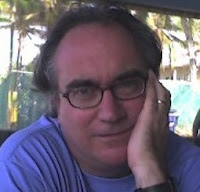The mind/body problem, in its contemporary, materialist form, splits into two distinct metaphysical problems. One is the problem of "intentionality," that is discussed in many of the other posts on this blog. The other is "phenomenology." The idea is that there is a quality, a feeling, that constitutes your experience of, say, seeing a red surface, or tasting a bit of chocolate, and this quality, the "phenomenal property" of the "mental state," eludes physical descriptions and explanations of the mental (for example neurophysiological descriptions). Thus, the argument goes, reductive materialism fails (Frank Jackson, Thomas Nagel, etc.). A slightly older incarnation of this argument in western philosophy is Husserl's claim a century ago that a free-standing "phenomenology," or study of phenomenal experience, was needed in addition to empiricist study of the physical world.
I am convinced that the problem of phenomenal properties is a pseudoproblem. I don't think that there are any such things as phenomenal properties. The best contemporary statement of the sort of view that I espouse is found in Wittgenstein, first stated in the Tractatus but consistent in all of his writings (and the subject of an earlier post on this blog). Experience of the world cannot be separated from the world itself. "I am my world." Wittgenstein enlisted the word solipsism to denote this argument. Experience is the means, the framework, through which we (by definition) experience the world. We cannot experience experience. "The limits of my language are the limits of my world." Phenomenal language is our tool for describing the experienced world.
This view is well-developed in the ancient tradition of Buddhism (anybody who is interested in consciousness needs to spend time with the Buddhist literature, a vast literature of consciousness dating back more than 2,000 years). In the Indian and Tibetan lineage we can see the concept of idealism used much as Wittgenstein uses the concept of solipsism. The mind creates the world, the mind is one with the world. Mental content is on the surface, but the practice of meditation brings us to communion with consciousness itself, which is described as emptiness, or alternatively as everything (the world). I suppose that I will have to go harvesting quotations from the Mahayana and Tibetan literature to illustrate the view as it is found in that lineage (sigh. Not that this will be difficult, the view is central). Today I have some quotations from the later Zen school of Buddhism that developed in China and Japan.
This semester in my Buddhism course I went over a couple of chapters in Alan Watts' still-essential Way of Zen and was struck by a couplet from the 15th century koan anthology Zenrin Kushu: the mind is "Like a sword that cuts, but cannot cut itself; Like an eye that sees, but cannot see itself." This is identical to Wittgenstein's view. Wittgenstein even gives us a little diagram with the eye outside of the circle of perception. I love the "sword that cuts but cannot cut itself." We experience the world, we move through the world: neither the world nor experience can be considered in detachment from the other. Dogen (1200-1253), perhaps the greatest writer in the Zen tradition, is forever making the same point, using the word shinchi, usually translated as mind-ground.
"The entire world is mind-ground; the entire world is blossom-heart. Because the entire world is blossom-heart, the entire world is plum blossoms. Because the entire world is plum blossoms, the entire world is Gautama's eyeball." (Moon in a Dewdrop, pp. 117-118).
Since this whole line precludes any possibility of phenomenology, it is interesting to note that Jean-Paul Sartre's existential theory of consciousness also entails that nothing can be said about consciousness, because, according to Sartre, consciousness is the "no-thing," pure negation arising dialectically from the concrete world.
Thursday, May 17, 2007
Subscribe to:
Post Comments (Atom)

No comments:
Post a Comment